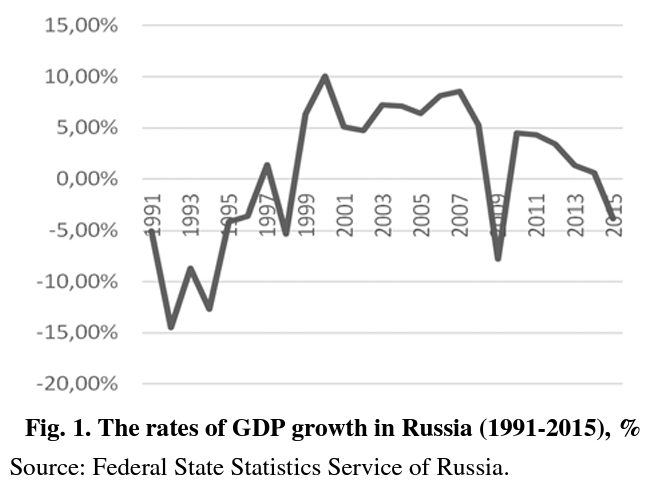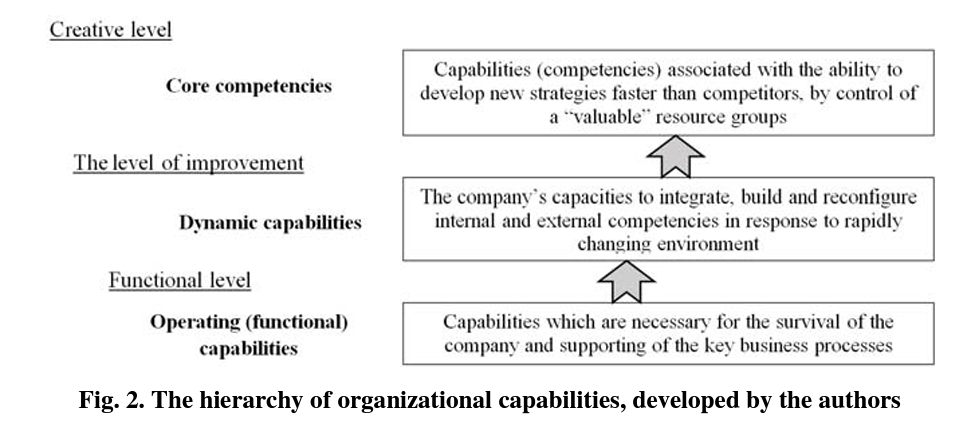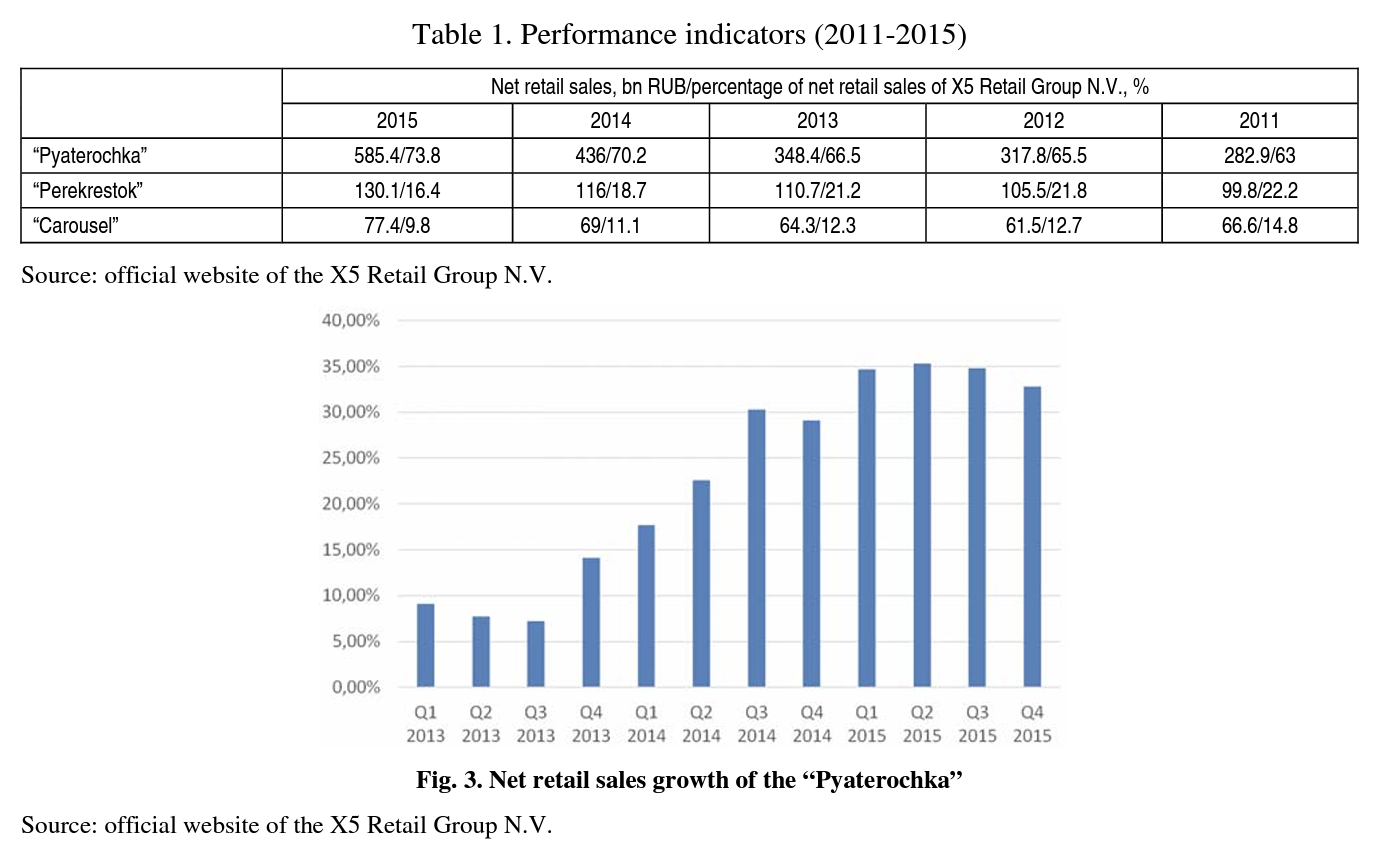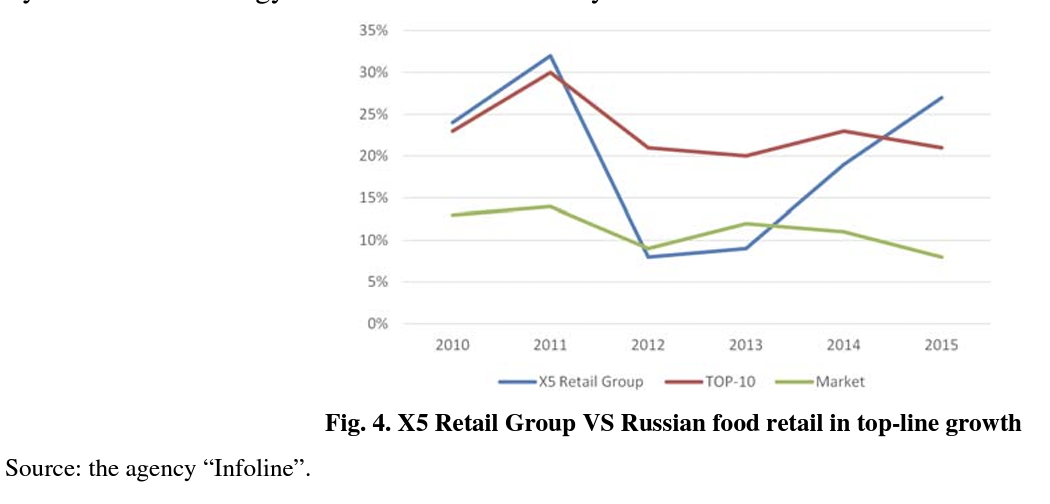Resource-based view as a perspective management model in Russian reality


Опубликована Июнь 13, 2016
Последнее обновление статьи Дек. 9, 2022
Abstract
Time after time, different economies, such as the world economy or a national economy, are exposed to diverse fluctuations of various origins. The reasons for this can be multifold. Thus, in the context of an economic crisis, staying ahead of competition is vital for any company’s survival. In addition, each year, the global competition becomes tougher. The fundamental question of modern management of an enterprise is how to achieve competitive advantage and hold it. Consequently, the effective management of an enterprise, based on a rational use of resources, comes to the fore. The goal of this research is to analyze one of the models of modern resource management – resource-based view and to relate this model of management to the current state of the Russian economy. Theoretical and practical aspects of the model are presented. Development of the resource-based view at the Russian retail chain – X5 Retail Group is separately allocated. It is the unique practical example of using above mentioned concept in Russia. The possibility of implementing the resource-based view is considered in the context of the current economic situation in the country. Summarizing, resourcebased view can become a truly breakthrough strategy in the context of the Russian economic situation
Ключевые слова
Resource management, core competencies, resource-based view, Russian management style
Introduction
In 2015, Russian economy plummeted into a deep recession due to the current global geopolitical situation. Forecasts for this year are different. So, the international rating Agency Moody’s Investors Service initially announced the reduction in real GDP in 2015 by about 3% and about stagnation in 2016 in its official press release, and, then, lowered its forecast for 2016, assuming a GDP decrease by 0.5-1.5%. Another equally influential rating Agency Standard & Poor’s gave a positive forecast for 2016, resulting in GDP growth of 1.9% due to the increase in oil prices to 70 dollars per barrel. The experts of the International Monetary Fund tend to see the negative trend in the development of the Russian economy. They stated of GDP decline by 1.1% in 2016. Graph showing the GDP growth rate in Russia is shown below.

Maintaining and increasing the competitiveness of domestic enterprises are particularly important in such economically challenging times. In conditions of deficiency of investment and increasing requirements to the product quality, effective management models based on the rational use of domestic resources become very significant. According to A.P. Prokhorov (2002), rational use of resources is a long-standing problem of the Russian management. He wrote that there is a so-called Russian management style. Absolute inefficiency, but great result, are the major characteristic features of this style. The inefficiency lies in the fact that this type of management was originally not aimed on efficiency and minimization of costs to achieve maximum results. It’s perfectly acceptable to use a tremendous quantity of resources to achieve goals. There is no country where the resources are used in such large volumes. It is common practice of achieving goals at any cost in the framework of the Russian management style.
1. Theoretical foundation of the resource-based view
Problems of definition and formation of the mechanism of management of the aggregate economic resources of an enterprise are explored in the works of foreign and local authors. Among foreign researchers are B.Wemerfelt (1984), R.M. Grant (1991), C.K. Prahalad and G. Hamel (1990), D.J. Collis and C.A. Montgomery (1995), D.J. Teece (1997), J. Barney (1991) and others. Among the national scientists we should mention G.B. Kleiner (2011), V.S. Katkalo (2002, 2003), M.A. Storchevoy (2006, 2013), V.V. Glukhov (2012) and others.
The flash of interest in resource management in the second half of the XXth century was justified by the market condition. It contributed to the simultaneous appearance of the different approaches. The resource-based view is the newest model of the resource management. The source of the resourcebased view is considered to be the thesis expressed by Danish economist B. Wemerfelt (1984). From his point of view, the analysis of a firm from the resource position is more useful than from the products position. According to the main idea of the resource-based view, the source of economic rents are resources that can be called unique for this company. And the emphasis is on the ability to combine available resources, creating the strategic opportunities for the organization development. It isn’t important, if a company operates in production, retailing or construction. According to the resourcebased view, each company of any sphere is explored as a set of resources. The most basic requirement is the selection of such abilities of a company, which are the core competencies. In other words, there are valuable, rare, inimitable and non-substitutable abilities (J. Barney, 1991), which are capable of providing the company’s long-term competitive advantage. Core competencies can be in logistics, marketing, assembly, design, service, etc.
Nowadays, there are two conceptual variations of this model of the resource management. The first is the traditional or structural version, which comes from the fact that firms operate on markets with predictable behavior parameters. The combination of resources is set not by the firm, but is dictated by processes occurring on market. The weak point of the classical approach is its static character and the lack of response to the question - how does the resource support of an enterprise can adapt to changes of the market environment. The second one is the dynamic or process version, according to which internal processes have an impact on the formation of the resource combinations. In the modem conditions, this variation is the most actual and it allows to analyze and estimate the business processes of an industrial enterprise. D.J. Teece (1997) suggested to complement the resource-based view by the method of “dynamic capabilities” and include to the subject of the analysis and management such components as competencies (capabilities) and organizational process. Dynamic capabilities of enterprises are important components of their competitiveness in the market conditions. It is noteworthy that they are largely determined by the available intellectual resources.
D. Lollis (1994) was the first who tried to analyze the hierarchy of organizational capabilities and made conclusion that it consists of three levels (Figure 2).

According to the figure, the intellectual resources of company are necessary basis for the formation of a hierarchy of organizational capabilities, because these abilities are required for survival and supporting of the key business processes and they provide advancement between levels in the hierarchy.
Due to the considerable popularity of the resourcebased view in the foreign practice, there is a large number of totally of the latest research in this field of strategic management. Researchers examine the theory from the different sides. But nobody questions the fundamental basis of it. Many scientists consider the concept in combination with other fields of knowledge and spheres of activity. For example, resource-based view in project management (K. Ahnarri, P. Gardiner, 2014), in the field of IT innovation (I.-L. Wu, M.-L. Chiu, 2015), in the textile industry, analyzing the relationship between organizational capabilities, business strategy and profitability (M.Ä. Lopez-Cabarcos, S. Göttling- Oliveira-Monteiro, P. Vazquez-Rodnguez, 2015). And, of course, scholars pay great attention to the development of the theoretical aspects of the resourcebased view. It is possible to speak about existing trend. J. Bloodgood (2014) believes that the concept should be supplemented with additional explanation of how and when managers make resource decisions. J. Schmidt and T. Keil (2013) concentrate on the question of the identification conditions and mechanisms that make a resource valuable to a firm. R.S. Nason and J. Wiklund (2015) compare resourcebased view with Penrosean theory, which is based on the resources too, but discusses the versatility of resources. Finally, many scientific fellows devote their works to the possible prospects of this model of the resource management (J.B. Barney, D.J. Ketchen, M. Wright, 2011).
2. Key research findings
2.1. Resource-based view in Russia. In contrast to the developed countries, resource-based view has not yet received sufficient development in Russia. From a theoretical point of view, now, the Russian authors (G.B. Kleiner, V.S. Katkalo, M.A. Storchevoy and others), studying foreign methodology and experience, try to develop adaptive models to the Russian realities. Due to the fact that the theoretical basis is entirely based on studies of foreign scientists, the central task of Russian researchers is to distribute the resource-based view in Russia, acquainting with the genesis and principles of this concept. So, V.S. Katkalo (2002, 2003), pays great attention to the pluralism in the interpretation of the main definitions of this model of resource management. Also, in his works, there is a global analysis of the foreign fundamental scientific studies about the resourcebased view. M.A. Storchevoy (2006) explores in detail such component of the above-mentioned model of resource management as the concept of dynamic capabilities. Russian researcher also focuses on the variability of interpretation of definitions, comparing the meanings of the terms. Attention is mainly paid to the implementation of the resource-based view in the sphere of retail trade. Core competencies in logistics were largely marked by Russian scholars. In general, Russian scientists agree with the position of their foreign colleagues about the great prospects of resource-based view in the framework of the strategic management. They are followers of their ideas in the resource management and try to adapt to Russian conditions of economic development.
From a practical point of view, resource-based view in the activity of domestic industrial enterprises is being expressed episodically and implicitly. V.S. Katkalo (2002) mentioned the example of “Pyaterochka” as an alternative of the well-known American retail chain “Wal-Mart”, which is one of the best store chain in the world. These companies are committed to a strategy of cost leadership. Each of them achieves outstanding success in its geographic market due to the possession of unique set of resources and abilities, distinctive strategies and organizational systems. The Wal-Mart’s core competencies can be found through its functionality, reliable performance, like superior logistics. Logistics capability involves standardized procedures for warehouse handling and inventory management in combination with standardized resource configurations that cluster stores around company distribution centers. The company has reaped consistently high profits by systematically using strategy based on the resource-based view.
Empirical analysis. The network of stores “Pyaterochka” is a remarkable example of the application of this concept in Russia. It is a part of the X5 Retail Group N.V. and one of the leading retailers in Russia. This company has tried to reproduce Wal-Mart’s strategy, but adapted to the Russian reality. It isn’t a simple copy of strategy. Wal-Mart’s implementing of the resource-based view was the example for the “Pyaterochka”. Core competencies of the company are concluded in the organization of logistics. This is an extensive set of skills, including the skills of managing a retail warehouse by wide radio frequency terminals, mechanization and automation of the assembling and warehousing of goods using labels with unique numbers and barcodes. The ability to manage and control the passage of goods from receipt at warehouse to sales in the store is also the core competence of the “Pyaterochka”. For example, organization of the logistic system in Omsk stores is a significant instance. The goods are delivered to the stores, picked on europallets. This method of delivery greatly reduces the loading time of goods in the warehouse, and the time of unloading and acceptance in the shops. Therefore, it needs for only two vehicles for daily delivery to 16 Omsk shops. Each of them has an optimally thought out route. The occupancy of the stores is taken into account schedules. Each store takes a day to 45 cars a third- party vendor delivering goods requiring special temperature conditions, so the car should come at such a time, in order to unload the goods without delay. Due to the words of the head of the Directorate of logistics of the Omsk retail chain: “Efficient logistic system allows to minimize the costs associated with moving goods from producer to buyer, at each stage”. It starts with the minimization of costs from the central warehouse, which would be correct to not call the warehouse, but distribution and logistics center as its task not so much in storing as in the efficient distribution of commodity flows between different stores. Warehouse logistics is implemented, primarily, in the zonal warehousing of goods. All commodity groups are divided into three categories, which are calculated based on the turnover ratio. Each category and product group has its fixed location in the warehouse. This scheme significantly saves time and resources. Also rational logistics allows to minimize the number of staff at all stages of product movement. The central warehouse is served by the duty team of seven people. In stores, commodity flows are also optimized, which allows to do very small number of loaders. Distribution logistics, which tracks the status of inventory in each store and effectively distribute the supply has been introduced. As a result, acceptance of three hundred types of goods weighing up to 2 tons is 15 minutes in the store. And the same job takes an hour or an hour and a half without using this technology. This is real outcome of implementing the resource-based view in Omsk stores, which is focused on the core competencies linked with the logistics.
The network of stores “Pyaterochka” is a flagship of the X5 Retail Group N.V., accounting for about 90% of selling space added in 2015. Performance indicators of the group are presented in Table 1.

X5 Retail Group N.V. also includes such companies as the “Perekrestok” and “Carousel”. Their strategies are various. They have only one similarity - they are retailers. There are many differences between them. Only the “Pyaterochka” applies the resource-based view. Table 1 and 2 demonstrate that the Pyaterochka’s strategy is the most effective. By the end of 2015, the company revealed a record pace of development in the scale of not only X5 retail group, but also the market of Russian food retail, increasing revenue by 34.6 %. The rate of growth of the group, whose leader is the “Perekrestok”, compared with the top 10 retail companies and the market of food retail is clearly shown (Figure 4).

Due to the X5 Retail Group CEO’s words: “The company has demonstrated growth through the optimization of activity and effective management style. Over the past three years, it has implemented a series of ambitious reforms, laying the basis for maintaining rapid and sustainable growth in the coming years”. Other companies can learn from this experience. However, the copying of the organizational strategies of the “Pyaterochka” is bound to fail. As a distinctive feature of the resource-based view, is the impossibility of applying the same unique sets of resources to different companies. In this case, for example, the “Perekrestok” that is also part of the X5 Retail Group N.V. cannot use the strategy of the “Pyaterochka”. But above-mentioned example shows that such unique set of resources can be, and such core competencies which are concluded in logistics can lead to the company’s success in the Russian realities. In addition, it demonstrates that strategy oriented on the costs is capable of increasing the company’s profit. By possessing these core competencies, the “Pyaterochka” holds the largest percent of the net retail sales of X5 Retail Group N.V. Moreover, this example allows to improve theoretical knowledge about the resourcebased view. Russian management style is at the beginning of the changing its philosophy.
The example of the “Pyaterochka” (X5 Retail Group N.V.) is a glimpse of light in the typical Russian management style, whose characteristic is not an efficient use of resources. Of course, there are negative examples of implementation this concept. But, in most cases, such a tool management as a “core competencies” is not common in the strategic management of domestic enterprises. In Russia there is the example of applying the resource-based view only in retailing and, for instance, such sphere as production doesn’t have the same example.
Conclusion
Resource-based view is very extensive and dynamic program that allows to get many valid answers to the important questions of strategic management of the companies. There are some outcomes of the article:
- The geopolitical situation and the absence of major structural changes in the Russian economy raise the question of implementing effective management models (like the resource-based view) at the Russian enterprises, allowing not only to rationalize the management of available economic resources, but also to identify and use the hidden resource potential.
- Further development of the basic ideas of the resource management, especially the concept of dynamic capabilities, may really contribute to the solution of its central task - the identification of the sources of sustainable competitive advantages of companies in the contemporary conditions of radically transforming environment.
- Obviously, the detection of core competencies will be accompanied by the outsourcing of not only the supply of basic resources, but also outsourcing of certain types of activities or functions too. And this is the reality of the modem strategic management.
- Moreover, the mobilization of production reserves allows to increase production considerably with minimal investments and minimal additional consumption of materials, fuel and energy.
- The successful example of introducing the concept in the organization of the retailing confirms the multiplicity of its application and motivates to use it in the Russian industry.
The implementation of the principles of resourcebased view at the Russian industrial enterprises can become the breakthrough strategy, which will increase their competitiveness in the world.
References
- Almarri, K. & Gardiner, P. (2014). Application of Resource-based View to Project Management Research: Supporters and Opponents, Procedia - Social and Behavioral Sciences, 119, pp. 437-445.
- Balashova, Ye.S. & Yuriev, V.N. (2014). Ekonomicheskij mehanizm i instrumentarij resursnogo menedzhmenta promyshlennogo predprijatija [Economic mechanism and tools of industrial enterprise resource management]. Petersburg: Izdatel’stvo Politehnicheskogo universiteta [in Russian], 240 p.
- Barney, J.B. (1991). Firm Resources and Sustained Competitive Advantage, Journal of Management, 17 (1), pp. 99-120.
- Barney, J.B., Ketchen, D.J., Wright, M. (2011). The Future of Resource-Based Theory. Revitalization or Decline? Journal of Management, 37 (5), pp. 1299-1315.
- Bloodgood, J. (2014). Enhancing the Resource-based View of the Firm: Increasing the Role of Awareness, Strategic Management Review, 8 (1), pp. 61-75.
- Collis, D.J. (1994). Research note: how valuable are organizational capabilities? Strategic Management Journal, 15 (8), pp. 143-152.
- Collis, D.J., Montgomery, C.A. (1995). Competing on Resources: Strategy for the 1990s, Harvard Business Review, 118-128.
- Glukhov, V.V., Balashova, E.S., Artemenko, E.S., Freydinov, Yu.L. & Plehanova, E.G. (2012). Resursnyj menedzhment: metody vyjavlenija rezervov proizvodstva [Resource management: methods for production reserves identifying], Petersburg: Izdatel’stvo “Nauka” [in Russian], 275 p.
- Grant, R.M. (1991). The Resource-Based Theory of Competitive Advantage, Californian Management Review, 33 (3), pp. 114-135.
- Katkalo, V.S. (2002). Resursnaja koncepcija strategicheskogo upravlenija: genezis osnovnyh idej i ponjatij [The resource strategic management concept: the genesis of the main ideas and concepts], Vestnik SPbGU - SPbGU journal, 4 (32), pp. 20-42, [in Russian],
- Katkalo, V.S. (2003). Mesto i roF resursnoj koncepcii v razvitii teorii strategicheskogo upravlenija [The place and role of the resource concept in the development of the of strategic management theory], Vestnik SPbGU - SPbGU journal, 3 (24), pp. 3-17, [in Russian],
- Klejner, G.B. (2008). Strategija predprijatija [Business strategy], Moscow: Izdatel’stvo “Delo” ANH, [in Russian], 568 p.
- Klejner, G.B. (2011). Resursnaja teorija sistemnoj organizacii jekonomiki [Resource theory of economic organization system], Rossijskij diurnal meneddtmenta - Russian Journal of Management, 9 (3), pp. 3-28, [in Russian],
- Kozlenkova, I.V., Samaha, S., Palmatier, R.W. (2014). Resource-Based Theory in Marketing, Journal of the Academy of Marketing Science, 42 (1), pp. 1-21.
- Löpez-Cabarcos, M.Ä., Göttling-Oliveira-Monteiro, S., Vazquez-Rodnguez, P. (2015). Organizational Capabilities and Profitability. The Mediating Role of Business Strategy, SAGE Open, 1-13.
- Nason, R.S., Wiklund, J. (2015). An Assessment of Resource-Based Theorizing on Firm Growth and Suggestions for the Future, Journal of Management.
- Porter, M. (1980). Competitive strategy. Techniques for analyzing industries and competitors, The free press, 453 p.
- Prahalad, C.K., Hamel, G. (1990). Competence of the Corporation, Harvard Business Review, 68 (3), pp. 79-91.
- Prokhorov, A.P. (2002). Russkaja model’ upravlenija [Russian management model], Moscow: CJSC “Zhumal Ekspert”, [in Russian], 376 p.
- Schmidt, J., Keil, T. (2013). What Makes a Resource Valuable? Identifying the Drivers of Firm-Idiosyncratic Resource Value, Academy of Management Review, 206-228.
- Storchevoy, M.A. (2006). Nekotorye somnenija v koncepcii dinamicheskih sposobnostej [Some doubts about the concept of dynamic capabilities], Vestnik SPbGU - SPbGU journal, 4, pp. 175-182, [in Russian],
- Storchevoy, M.A. (2013). Teorija firmy i strategicheskij menedzhment [The theory of the firm and strategic management], Voprosy ekonomiki - Economics Questions, 1, pp. 131-146, [in Russian],
- Teece, D.J., Pisano, G., Shuen, A. (1997). Dynamic Capabilities and Strategic Management, Strategic Management Journal, 18 (7), pp. 509-533.
- Wemerfelt, B.A. (1984). Resource-Based View of the Firm, Strategic Management Journal, 5 (2), pp. 171-180.
- Wu, I.-L., Chiu, M.-L. (2015). Organizational applications of ГГ innovation and firm’s competitive performance: A resource-based view and the innovation diffusion approach, Journal of Engineering and Technology Management, 35, pp. 25-44.
- Zollo, M., Winter, S.G. (2002). Deliberate learning and the evolution of dynamic capabilities, Organization science, 13 (3), pp. 339-351.





